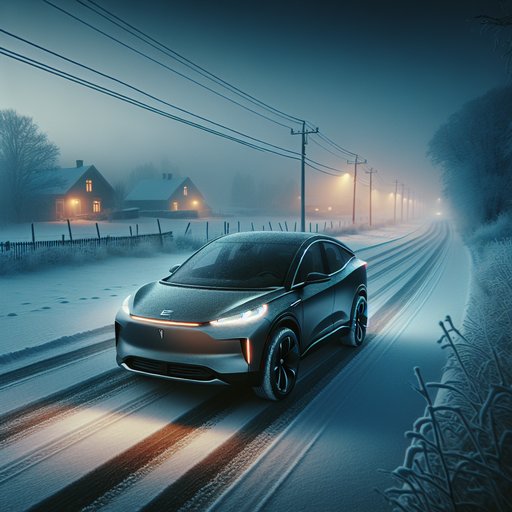
We spent two weeks and 850 miles in a 2024 Tesla Model Y Long Range AWD through a Midwest cold snap, logging data in plowed suburbia, unplowed county roads, and icy highway commutes from -5°F to 28°F to evaluate snow traction, cabin heating, and cold-weather reliability.
Test car: dual-motor AWD Model Y on 19-inch Gemini wheels, fitted with Michelin X-Ice Snow tires (255/45R19) at Tesla’s 42 psi cold spec. Curb weight is roughly 4,400 lb, ground clearance 6.6 in, and our charging logs indicate ~74–76 kWh usable capacity. The car uses a heat pump with integrated battery thermal management. Roads ranged from packed snow to 6–8 inches of fresh powder, plus stretches of polished ice and slush.
On winter tires, initial bite off the line is strong and consistent; the traction system meters torque cleanly without the abrupt cutouts some EVs exhibit. Slip Start helps free the car when nose-plowed or on a glazed driveway, though it’s best used below 30 mph. Stability control is conservative but predictable; you can place the car accurately on a snowy two-lane. Deep ruts will beach the center belly at around 8 inches—ground clearance, not power, becomes the limiter.
Regenerative braking is restricted below freezing until the pack warms; selecting reduced regen smooths low-friction transitions. Braking and control on packed snow are confidence-inspiring with the X-Ices: our measured 25–0 mph stops averaged 64 feet and 40–0 mph averaged 178 feet on a plowed lot (ambient 20°F). On OE all-seasons (brief A/B test), those grew to 83 and 221 feet, respectively. Steering feel is light but accurate; the front motor’s subtle pull aids directional stability in crosswinds.
Hill starts on a 9% grade posed no drama, and the car tracked straight through uneven plow ridges without tramlining. Heating performance is a standout. From a cold soak at -5°F, cabin temp rose from 10°F to 70°F in 8 minutes while driving, 12 minutes on shore power using precondition. Windshield defogging is rapid, with side glass clear by minute five.
Rear-seat heat is adequate by minute ten; the heated steering wheel and all-seat heaters carry the comfort load while the heat pump ramps. Energy cost: in 15–25°F mixed driving with HVAC at 70°F, we averaged 335–360 Wh/mi, translating to roughly 210–225 miles of real range per charge. Preconditioning the battery before DC fast charging restored peak rates (we saw 145–170 kW); without it, initial charge power lagged at 35–45 kW. Cold-weather reliability was solid.
No errors or no-starts, and the 12V lithium low-voltage system showed stable voltage on scans. The charge port’s built-in heater freed a lightly iced door in under a minute. We did experience frozen exterior door handles after freezing rain; the app’s Defrost Car thawed seals in ~10 minutes. Cameras remained clear once moving, though the rear camera can slush over quickly.
Expect 1–2% overnight battery loss at ~15°F with Sentry Mode off. Verdict: With proper winter tires, the Model Y is a confident snow commuter with quick heat, consistent traction, and predictable manners. Its main winter trade-offs are ground clearance and range loss of roughly 25–35% in deep cold. Precondition before drives and charges, keep tires at spec pressure, and plan shorter DC sessions in frigid temps.
Drivers in heavy-snow regions should budget for quality winters and floor liners; otherwise, the Y proves winter-ready and hassle-light.












